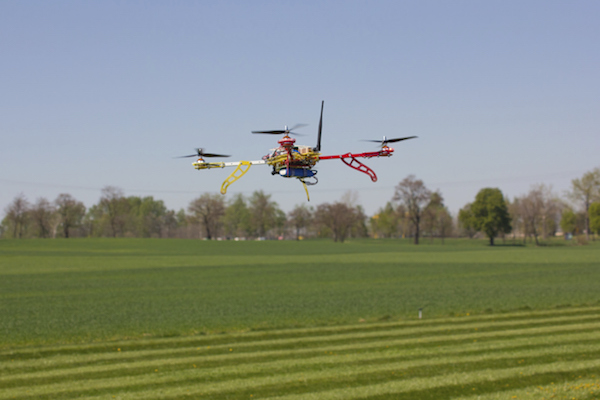Where you can and can’t legally fly a drone, or unmanned aircraft, changed in Texas as of Sept. 1, when a new law passed by the state legislature took effect. Amendments to the Use of Unmanned Aircraft statute were approved by a voice vote of the Texas House of Representatives and Senate, changing a law that has been on the books in Texas since 2013.
Not adhering to the newly amended statute could result in a Class C or B misdemeanors with fines of $500 to $2,000, depending on whether images obtained from an illegally flying drone were published. The statute is rather technical and should be referred to for specifics by any person who intends to use a drone, whether for professional, commercial or personal reasons. Because of the complexity of the statute, it can be easily violated.
The statute restricts certain users and uses. Also, the user of drones should be aware that the Federal Aviation Administration has regulations of its own that must be read in tandem with the Texas restrictions.
Texas law generally allows drones to be used for professional, academic or scholarly research by military, law enforcement and municipal authorities and certain safety and emergency purposes. It also allows Realtors and land surveyors to use drones for the purpose of marketing a property.
Perhaps the most general permission is that any drone use over private properly is legitimate with the owner’s consent. Drone use over public real property is also permitted.
In terms of restrictions, the statute prohibits both surveillance and imaging in certain areas. The statute makes it unlawful to intentionally conduct surveillance over private property using drones — a Class C misdemeanor subject to a $500 fine. Imaging is prohibited if it is obtained unlawfully. Generally speaking, if the use of drones is unlawful, so is any imaging associated with that use.
An “image” is defined very broadly under the statute as it “means any capturing of sound waves, thermal, infrared, ultraviolet, visible light or other electromagnetic waves, odor, or other conditions existing on or about real property in this state or an individual located on that property.”
Unlawful possession of images obtained in violation of the law is considered a Class C misdemeanor. Unlawful use or distribution of any unlawful image is considered a Class B misdemeanor subject to 180 days in jail and a fine of $2,000.
Unless you are among the group of people that is exempt from the restriction, the statute also severely restricts the use of drones over any “critical infrastructure facility.” Before using your drone, you should review that list. The latest amendment to the drone law expanded the list to include concentrated animal feeding operations, oil or gas drilling sites, storage tanks, production facilities, wellheads or flares that are enclosed by a fence or other barrier. Also added to the list were structures that relate to telecommunication services.
Another significant amendment to the law seeks to limit municipal regulation of drones; thus, political subdivisions such as counties and municipalities are prohibited from regulating the use of drones except under very restrictive circumstances.
Known as House Bill 1643, the law was approved by the 85th Legislature in its regular session on May 30. Gov. Greg Abbott signed the amendments into law on June 16.
Changes in drone law restricts use over private property

A new statute makes it unlawful to intentionally conduct surveillance over private property using drones — a Class C misdemeanor subject to a $500 fine. Courtesy photo